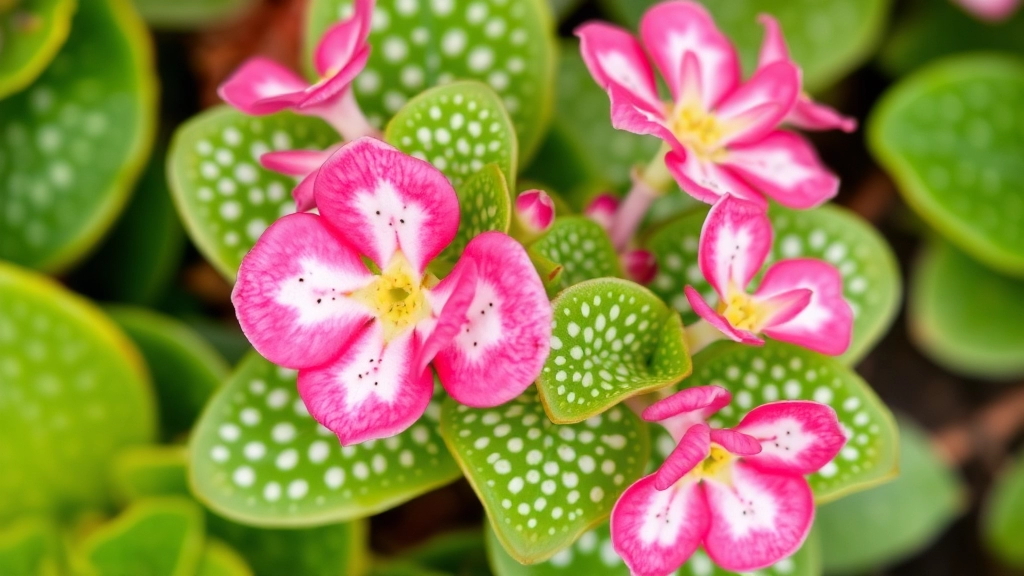Common Issues with Kalanchoe Tomentosa
Have you noticed white spots on your Kalanchoe Tomentosa? You’re not alone. These spots often signal common issues like powdery mildew, mealybug infestations, or even root rot from overwatering. Understanding these problems is the first step to restoring your plant’s health.
Identifying the Problems
Powdery mildew appears as a white, powdery substance on the leaves. Mealybugs, on the other hand, leave behind a cotton-like residue. Overwatering can lead to root rot, causing white and yellow leaves. Identifying the cause helps you tackle the issue effectively and keep your Kalanchoe Tomentosa thriving.
Are you noticing white spots on your Kalanchoe Tomentosa? You’re not alone. Many plant enthusiasts encounter this issue, and it can be concerning. Understanding the common causes of these white spots is the first step in addressing the problem.
### 1. Powdery Mildew
One of the most prevalent causes of white spots is powdery mildew. This fungal disease manifests as a white, powdery substance on leaves. It thrives in humid conditions and poor air circulation, making it a common issue for indoor plants.
### 2. Mealybugs
Another culprit could be mealybugs. These pests appear as small, white, cotton-like masses on leaves and stems. They feed on the plant’s sap, leading to stress and potential damage.
### 3. Environmental Stress
Environmental factors can also lead to white spots. If your Kalanchoe is exposed to extreme temperatures or direct sunlight, it may develop spots as a stress response.
### 4. Nutrient Deficiencies
Nutrient deficiencies, particularly a lack of calcium or magnesium, can result in white spots or discoloration on leaves. This usually indicates that your plant isn’t receiving the nutrients it needs for optimal health.
### 5. Root Rot
Finally, root rot can cause leaves to turn yellow or develop white spots. This condition often stems from overwatering, which suffocates the roots and leads to decay. For more detailed care instructions, check out this [complete guide for Kalanchoe Tomentosa](https://planthq.org/how-to-care-for-kalanchoe-tomentosa-complete-guide/).
If you’re dealing with white spots on a different variety, such as Kalanchoe Blossfeldiana, you might find this [care guide for Kalanchoe Blossfeldiana](https://planthq.org/kalanchoe-blossfeldiana-hybrid-care-guide-tips-for-thriving-plants/) helpful.
Identifying Powdery Mildew on Kalanchoe Tomentosa
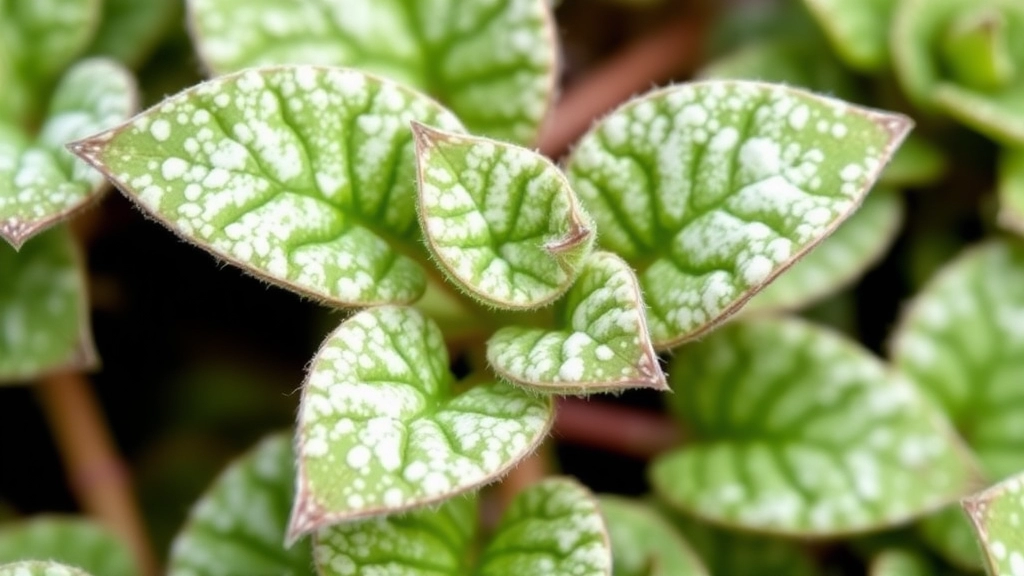
Have you ever noticed a dusty, white coating on your Kalanchoe Tomentosa? You might be dealing with powdery mildew.
This fungal issue is quite common, and it can sneak up on you if you’re not paying attention.
What to Look For
- White Powdery Spots: These appear on the leaves and stems, resembling flour.
- Leaf Discoloration: Leaves may turn yellow or develop dark spots.
- Stunted Growth: Your plant might start to look a bit sad and not grow as it should.
I remember the first time I spotted it on my plant. I thought it was just some dust, but it quickly escalated.
How It Spreads
Powdery mildew loves humidity and poor air circulation.
If you’ve got your Kalanchoe in a crowded spot or somewhere damp, it’s a prime target.
Why It Matters
Ignoring powdery mildew can lead to serious issues. Your plant’s health can decline, and it might even die if not treated.
How to Treat and Prevent Powdery Mildew
If you’ve noticed white, powdery spots on your Kalanchoe Tomentosa, you’re likely dealing with powdery mildew. This fungal disease can be concerning, but with the right approach, you can effectively treat and prevent it.
Treatment Options
- Remove Affected Leaves
Start by carefully pruning any leaves that show signs of infection. Dispose of them properly to prevent further spread. - Increase Air Circulation
Ensure your plant is not overcrowded. Space out your plants to allow for better airflow. - Use Fungicides
Consider applying a fungicide specifically formulated for powdery mildew. Look for products containing potassium bicarbonate or neem oil. - Homemade Remedies
A mixture of water and baking soda can be effective. Combine 1 tablespoon of baking soda with 1 gallon of water and spray on affected areas.
Prevention Strategies
- Monitor Humidity Levels
Keep humidity low, as powdery mildew thrives in damp conditions. A dehumidifier can help if you’re in a particularly humid environment. - Proper Watering Practices
Water your Kalanchoe Tomentosa at the base, avoiding wetting the leaves. Early morning watering allows leaves to dry out during the day. - Choose the Right Location
Place your plant in a well-ventilated area with plenty of sunlight. Avoid shady spots where moisture can linger. - Regular Inspections
Regularly check your plant for early signs of powdery mildew. The sooner you catch it, the easier it is to manage.
Understanding Mealybugs and Their Effects on Leaves
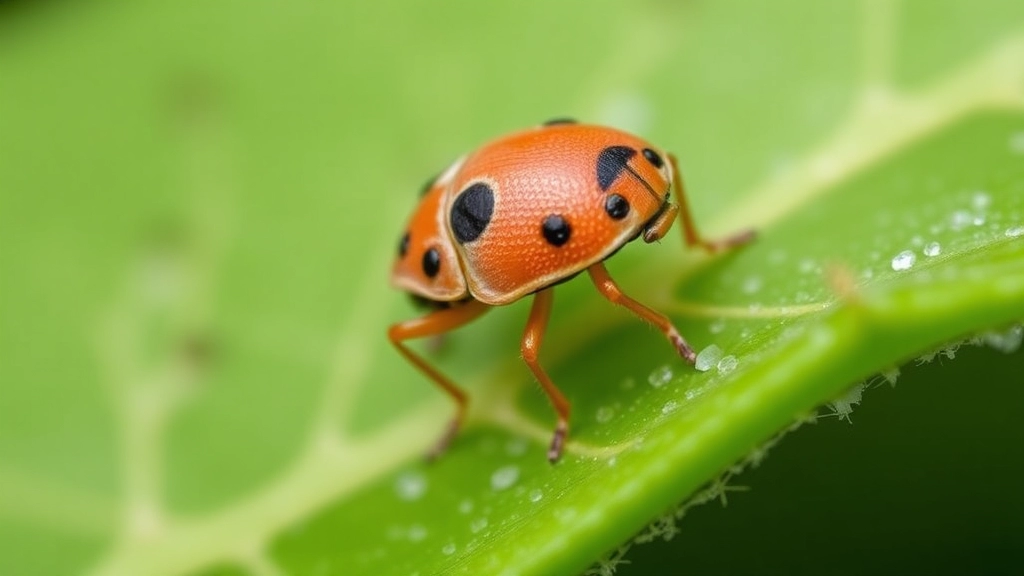
Have you noticed tiny, cotton-like masses on your Kalanchoe Tomentosa? These could be mealybugs, a common pest that can wreak havoc on your plant’s health.
Mealybugs are small, soft-bodied insects that feed on the sap of your plant. They are often found in clusters on the undersides of leaves and along stems. Their presence can lead to several issues:
- Stunted Growth: As they consume sap, they deprive the plant of essential nutrients.
- Leaf Discoloration: Infected leaves may develop white spots or turn yellow.
- Sticky Residue: Mealybugs excrete a sugary substance known as honeydew, which can attract other pests and lead to sooty mould.
- Weakness: Over time, a heavy infestation can weaken the plant, making it more susceptible to diseases.
Recognising mealybugs early is crucial for maintaining the health of your Kalanchoe Tomentosa.
Steps to Eliminate Mealybugs from Kalanchoe Tomentosa
Dealing with mealybugs can be a frustrating experience for any plant enthusiast. These pests not only affect the appearance of your Kalanchoe Tomentosa, but they can also weaken the plant over time. If you’ve noticed white, cotton-like spots on your leaves, it’s crucial to act quickly.
Here’s how to effectively eliminate mealybugs:
- Inspect Your Plant:
- Check the undersides of leaves and in leaf joints.
- Look for small white masses, which are the mealybugs themselves.
- Manual Removal:
- Use a cotton swab dipped in rubbing alcohol to remove mealybugs.
- Gently wipe them away, ensuring you reach hidden areas.
- Dispose of the swabs after use to prevent reinfestation.
- Insecticidal Soap:
- Mix a solution of insecticidal soap and water.
- Spray the affected areas thoroughly.
- Repeat every few days until the mealybugs are gone.
- Neem Oil Treatment:
- Consider applying neem oil, a natural pesticide.
- Mix according to the instructions and spray on the plant.
- This will help deter future infestations.
- Quarantine Affected Plants:
- If you have multiple plants, isolate the infected Kalanchoe.
- This prevents mealybugs from spreading to healthy plants.
- Maintain Hygiene:
- Keep your gardening tools clean to avoid transferring pests.
- Regularly clean the area around your plants to remove debris.
By following these steps, you can effectively eliminate mealybugs from your Kalanchoe Tomentosa and protect its health. For more detailed care tips, you can refer to our Kalanchoe Tomentosa White Care Guide and learn about the toxicity of Kalanchoe Tomentosa to keep your pets safe.
Root Rot: Another Reason for White and Yellow Leaves
Have you noticed your Kalanchoe Tomentosa sporting some unsightly white or yellow leaves?
Root rot could be the sneaky culprit behind this distressing change.
When your plant’s roots sit in soggy soil for too long, they can start to decay, leading to all sorts of problems.
Here’s how to spot root rot:
- Leaves Turning Yellow: If your Kalanchoe’s leaves are yellowing, it’s a sign that the roots are struggling.
- Soft, Mushy Roots: Gently remove the plant from its pot and check the roots. If they feel soft or look brown, root rot is likely.
- Foul Odour: A rotten smell coming from the soil is a clear indicator that something’s gone wrong.
What causes root rot?
- Overwatering: This is the number one reason. Kalanchoe prefers to dry out between waterings.
- Poor Drainage: If your pot doesn’t have drainage holes, excess water has nowhere to go.
- Cold Temperatures: Roots can suffer in cold conditions, making them more susceptible to rot.
So, how do you tackle root rot?
- Repot Immediately: Remove your plant from the pot and trim away any rotten roots.
- Use Fresh Soil: Choose a well-draining soil mix, ideally designed for succulents.
- Choose the Right Pot: Ensure your pot has drainage holes to prevent future issues.
- Adjust Watering Habits: Allow the soil to dry out completely between waterings.
Best Practices for Watering Kalanchoe Tomentosa
When it comes to maintaining a healthy Kalanchoe Tomentosa, watering is crucial. Many plant enthusiasts often worry about overwatering or underwatering, both of which can lead to unsightly white spots or other issues.
Key Watering Guidelines:
- Frequency: Water your Kalanchoe Tomentosa every two to three weeks. This can vary based on your environment, so adjust as needed.
- Soil Check: Always check the top inch of soil before watering. If it feels dry, it’s time to water. If it’s still moist, wait a few more days.
- Watering Technique: Water thoroughly until you see it draining from the bottom of the pot. This ensures that the roots are getting enough moisture.
- Avoid Standing Water: Ensure that excess water doesn’t sit in the pot or saucer, as this can lead to root rot.
- Seasonal Adjustments: In winter, reduce watering frequency, as the plant’s growth slows down.
By following these practices, you can help prevent common issues like root rot, which is another reason for white and yellow leaves. For more detailed tips, check out our watering best practices guide. Additionally, if you’re interested in propagation tips, visit our step-by-step propagation guide.
How Sunlight and Air Circulation Affect Leaf Health
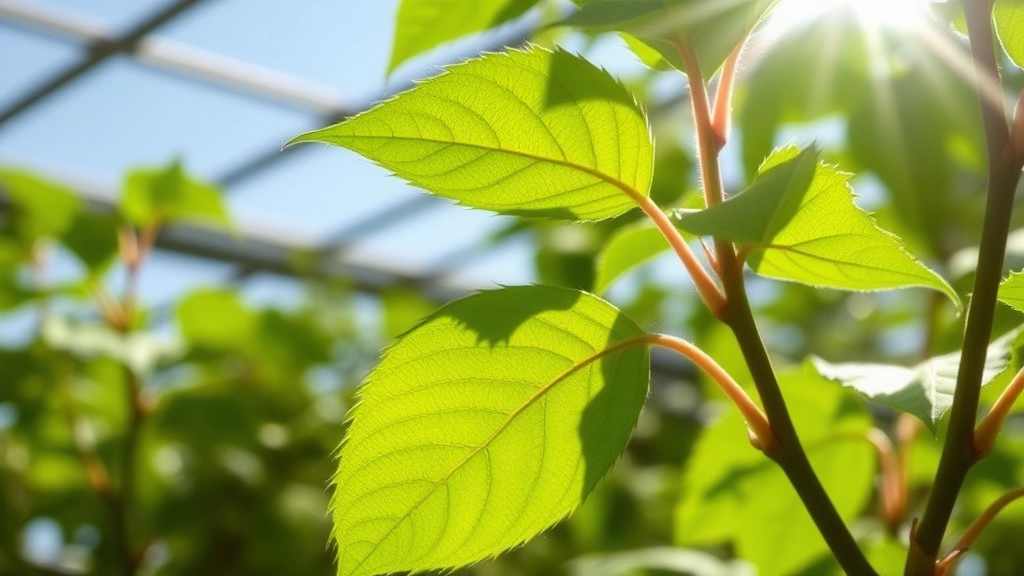
Have you ever noticed your Kalanchoe Tomentosa looking a bit lackluster?
It could be down to sunlight and air circulation, two key players in keeping your plant vibrant and healthy.
Sunlight: The Lifeblood of Your Kalanchoe
Kalanchoe Tomentosa loves bright, indirect sunlight. Here’s how to ensure it’s getting just the right amount:
- Location Matters: Place it near a window where it can soak up light without being scorched.
- Watch for Signs: If the leaves start to stretch or turn pale, your plant might be craving more light. If they burn or get crispy edges, it’s time to move it back a bit.
Air Circulation: The Unsung Hero
Good air circulation is just as important as sunlight. Stagnant air can lead to problems like powdery mildew. Here’s what to keep in mind:
- Avoid Crowding: Don’t bunch your Kalanchoe with other plants. Give it some space to breathe.
- Open Windows: If conditions allow, open windows to let fresh air circulate around your plant.
Combining Sunlight and Air
Think of sunlight and air circulation as a dynamic duo. When they work together, your Kalanchoe thrives.
- Balanced Environment: Aim for a spot that offers both bright light and good airflow.
- Seasonal Changes: Adjust the position of your plant with the changing seasons to keep it happy.
Soil and Drainage Tips for Preventing Plant Diseases
When it comes to keeping your Kalanchoe Tomentosa healthy, the right soil and drainage are essential. Poor soil conditions can lead to diseases and stress that manifest as white spots or yellowing leaves.
How to Propagate Kalanchoe Tomentosa for Healthier Growth
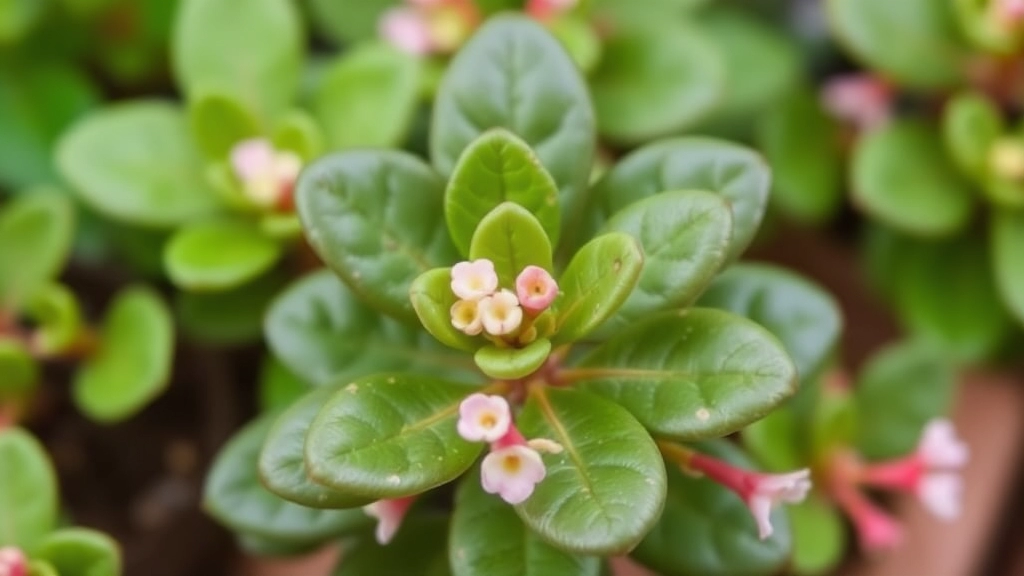
So, you’re looking to propagate your Kalanchoe Tomentosa? You’re in for a treat! This plant is not just a beauty; it’s also pretty easy to multiply.
Why Propagation Matters
Propagation isn’t just about getting more plants; it’s about ensuring healthier growth. A well-propagated plant can flourish better, leading to fewer issues like those pesky white spots we talked about earlier.
Methods of Propagation
There are a couple of straightforward methods to propagate Kalanchoe Tomentosa:
- Leaf Cuttings
- Choose a healthy leaf from the mother plant.
- Cut it cleanly at the base.
- Let it dry for a day or two to form a callus. This helps prevent rot.
- Place it on well-draining soil and lightly mist it.
- Keep it in a warm spot with indirect sunlight.
- Offsets (Pups)
- Look for small offsets at the base of the plant.
- Gently twist or cut them away from the main plant.
- Allow them to dry for a day.
- Plant them in soil, just like the leaf cuttings.
Tips for Successful Propagation
- Soil Choice: Use a cactus mix or a well-draining potting mix.
- Watering: Water sparingly. Too much moisture can lead to rot.
- Light: A bright, indirect light is best. Direct sunlight can scorch the new growth.
- Humidity: Keep the humidity levels moderate. Too much can encourage mold.
Common Mistakes to Avoid
- Don’t overwater! This is a common mistake that can lead to root rot.
- Avoid direct sunlight on new cuttings. It can be too harsh for them.
Once you’ve got your new plants growing, you’ll be amazed at how quickly they thrive. Plus, you’ll have plenty of healthy Kalanchoe Tomentosa to share with friends or to fill your own space.
As we delve deeper into the health of Kalanchoe Tomentosa, it’s crucial to be aware of other diseases that can affect its vibrant leaves.
### 1. Leaf Spot Disease
Leaf spot disease manifests as dark or brown spots on the leaves, often surrounded by yellow halos. This can be caused by various fungal infections.
**Signs to Look For:**
– Dark brown or black spots on leaves
– Yellowing around the spots
– Premature leaf drop
### 2. Root Rot
While we’ve touched on root rot earlier, it’s worth reiterating that this condition can lead to both white and yellow leaves. Overwatering is typically the main culprit.
**Symptoms:**
– Wilting despite adequate moisture
– Blackened roots
– Foul smell from the soil
### 3. Bacterial Blight
Bacterial blight can also affect Kalanchoe Tomentosa, leading to water-soaked spots that may turn brown over time.
**Indicators of Infection:**
– Dark, water-soaked areas on leaves
– Leaf drop
– Stunted growth
### 4. Fungal Infections
Various fungal infections can lead to a range of symptoms, including wilting and leaf discoloration.
**Common Signs:**
– Powdery or fuzzy growth on leaves
– Leaf wilting
– Discoloration
### Prevention and Care
To keep your Kalanchoe Tomentosa healthy and free from these diseases, consider the following:
– **Proper Watering:** Avoid overwatering to prevent root rot.
– **Good Air Circulation:** Ensure your plant has enough space for air to flow.
– **Regular Inspections:** Check your plant regularly for early signs of disease.
For more detailed care tips, you can refer to our [complete guide on how to care for Panda Plant (Kalanchoe Tomentosa)](https://planthq.org/how-to-care-for-panda-plant-kalanchoe-tomentosa-a-complete-guide/). Additionally, if you’re interested in different varieties and their specific care needs, check out our article on [types of Kalanchoe Tomentosa varieties and care tips](https://planthq.org/types-of-kalanchoe-tomentosa-varieties-and-care-tips/).
Long-term Care and Maintenance to Avoid White Spots
So, you’ve tackled the immediate issues with your Kalanchoe Tomentosa, but what about keeping those pesky white spots at bay for good?
Regular Monitoring
First off, make it a habit to check your plant regularly.
- Look for Changes: Keep an eye out for any changes in leaf colour or texture.
- Inspect Underneath Leaves: This is where pests like mealybugs often hide.
Proper Watering Practices
Watering is crucial for your plant’s health.
- Allow Soil to Dry: Let the top inch of soil dry out before watering again.
- Use Room Temperature Water: Cold water can shock the roots.
Ideal Lighting Conditions
Your Kalanchoe loves bright, indirect sunlight.
- Avoid Direct Sunlight: This can scorch the leaves and lead to white spots.
- Rotate the Plant: Every few weeks, give it a gentle turn for even light exposure.
Air Circulation
Good airflow is essential to prevent diseases.
- Don’t Overcrowd: Keep your Kalanchoe away from other plants to allow for airflow.
- Open Windows: If possible, let fresh air circulate around your plant.
Soil and Drainage
Choosing the right soil can make a world of difference.
- Use Well-Draining Soil: A cactus mix works wonders.
- Ensure Drainage Holes: Always use pots with drainage holes to prevent waterlogging.
Fertilizing Wisely
A little love goes a long way.
FAQs About Kalanchoe Tomentosa and White Spots
What causes white spots on Kalanchoe Tomentosa?
White spots on Kalanchoe Tomentosa can be caused by powdery mildew, mealybugs, or root rot. Each has distinct characteristics and requires different treatments.
How can I identify powdery mildew on my Kalanchoe Tomentosa?
Powdery mildew appears as a dusty, white coating on the leaves and stems. You may also notice leaf discoloration and stunted growth.
What are the signs of a mealybug infestation?
Mealybugs appear as tiny, cotton-like masses on the undersides of leaves and stems. They can cause stunted growth, leaf discoloration, sticky residue, and overall plant weakness.
How does root rot affect Kalanchoe Tomentosa?
Root rot leads to yellowing leaves, soft and mushy roots, and a foul odor from the soil. It’s often caused by overwatering, poor drainage, or cold temperatures.
What steps can I take to prevent powdery mildew?
Ensure good air circulation and avoid high humidity. Place your plant in an area with adequate space and avoid overcrowding.
How do I treat a mealybug infestation?
Remove mealybugs manually with a cotton swab dipped in alcohol. For severe infestations, consider using insecticidal soap or neem oil.
What should I do if my plant has root rot?
Repot the plant immediately, trim away any rotten roots, use fresh, well-draining soil, and ensure the new pot has drainage holes. Adjust your watering habits to allow the soil to dry out between waterings.
How much sunlight does Kalanchoe Tomentosa need?
Kalanchoe Tomentosa thrives in bright, indirect sunlight. Avoid direct sunlight, which can scorch the leaves.
Why is air circulation important for Kalanchoe Tomentosa?
Good air circulation helps prevent fungal issues like powdery mildew. Ensure your plant has space to breathe and consider opening windows for fresh air.
How can I propagate Kalanchoe Tomentosa?
You can propagate Kalanchoe Tomentosa using leaf cuttings or offsets. Allow the cuttings to dry and form a callus before planting them in well-draining soil.
What are common mistakes to avoid when propagating Kalanchoe Tomentosa?
Avoid overwatering and direct sunlight on new cuttings. Use a well-draining soil mix and keep humidity levels moderate to prevent mold.
Why is propagation beneficial for Kalanchoe Tomentosa?
Propagation not only helps you get more plants but also ensures healthier growth. A well-propagated plant is less likely to suffer from issues like white spots.
References
-
How to Treat Powdery Mildew on Kalanchoe
-
Mealybugs: Identification and Control on Houseplants
-
Preventing and Treating Root Rot in Kalanchoe
